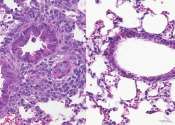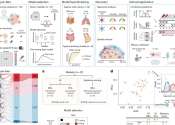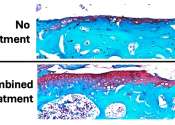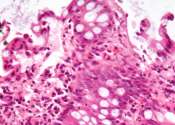How the inflamed brain becomes disconnected after a stroke
Whether reeling from a sudden stroke or buckling under the sustained assault of Alzheimer's, the brain becomes inflamed, leading to cognitive problems and even death.
Apr 12, 2024
0
64
Whether reeling from a sudden stroke or buckling under the sustained assault of Alzheimer's, the brain becomes inflamed, leading to cognitive problems and even death.
Apr 12, 2024
0
64

Researchers at the National Cancer Institute-designated Montefiore Einstein Comprehensive Cancer Center (MECCC) have shown that a breakthrough therapy for treating blood cancers can be adapted to treat solid tumors—an advance ...
1 hour ago
0
9

New USC research shows that iron serves as a gas pedal driving certain immune cells that cause inflammation in the lungs during an allergic asthma attack—and blocking or limiting iron may reduce the severity of symptoms.
1 hour ago
0
1

Most of the time, our immune systems do a great job defending against infection and keeping our bodies running smoothly. Sometimes, though, our immune system actually makes things worse. Case in point—researchers from Japan ...
3 hours ago
0
2

Using artificial intelligence, Ludwig Cancer Research scientists have developed a powerful predictive model for identifying the most potent cancer-killing immune cells for use in cancer immunotherapies.
May 7, 2024
0
3

Applying a pretreatment of a parathyroid hormone, commonly used to increase bone mass to combat osteoporosis, can help improve cartilage health and slow the development of osteoarthritis, Cornell researchers have found.
May 6, 2024
0
5

Starving out tumor cells may be a promising therapy for treatment-resistant lung cancer, according to a new study published in Science Advances.
May 6, 2024
0
26

B cells can control responses of myeloid cells through the release of particular cytokines (small proteins that control the growth and activity of cells in the immune system), disproving the previous consensus that T cells ...
May 6, 2024
0
5

Inulin, a type of fiber found in certain plant-based foods and fiber supplements, causes inflammation in the gut and exacerbates inflammatory bowel disease in a preclinical model, according to a new study by Weill Cornell ...
May 3, 2024
4
223

Activated T cells that carry a certain marker protein on their surface are controlled by natural killer (NK) cells, another cell type of the immune system. In this way, the body presumably curbs destructive immune reactions.
May 3, 2024
0
27

White blood cells (WBCs), or leukocytes (also spelled "leucocytes"), are cells of the immune system defending the body against both infectious disease and foreign materials. Five different and diverse types of leukocytes exist, but they are all produced and derived from a multipotent cell in the bone marrow known as a hematopoietic stem cell. Leukocytes are found throughout the body, including the blood and lymphatic system.
The number of leukocytes in the blood is often an indicator of disease. There are normally between 4×109 and 1.1×1010 white blood cells in a litre of blood, making up approximately 1% of blood in a healthy adult. An increase in the number of leukocytes over the upper limits is called leukocytosis, and in leukopenia, this number is much lower than the lower limit. The physical properties of leukocytes, such as volume, conductivity, and granularity, may change due to activation, the presence of immature cells, or the presence of malignant leukocytes in leukemia.
This text uses material from Wikipedia, licensed under CC BY-SA